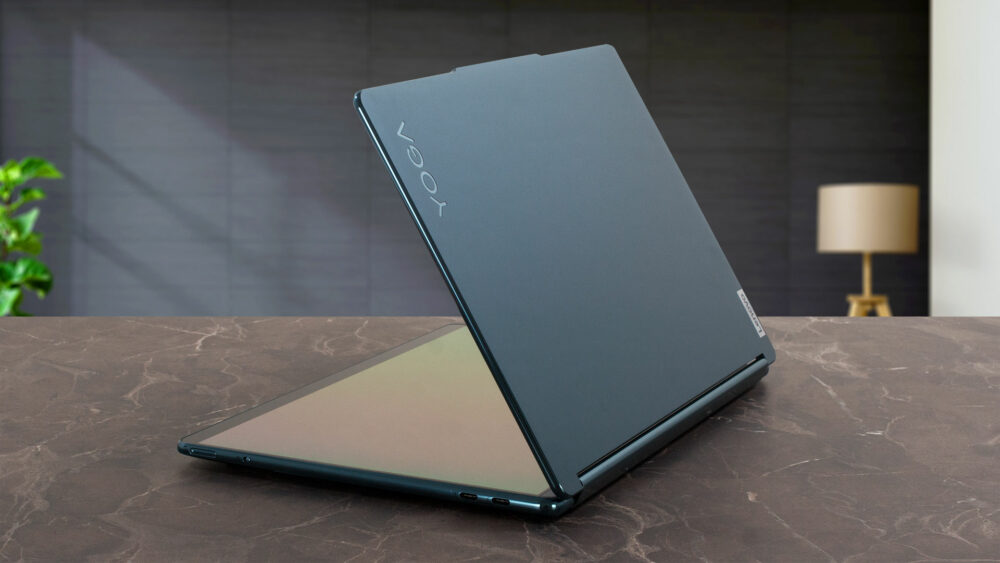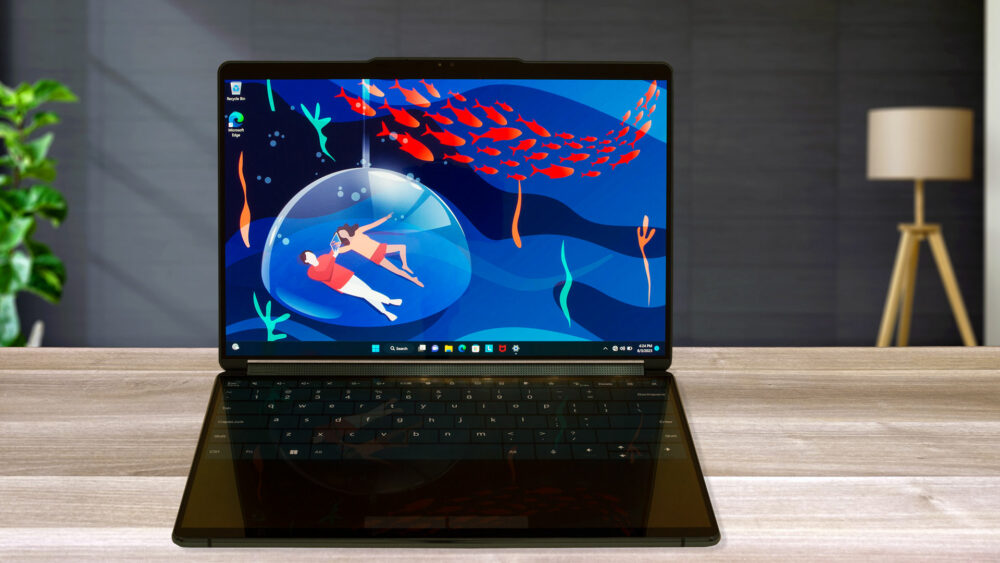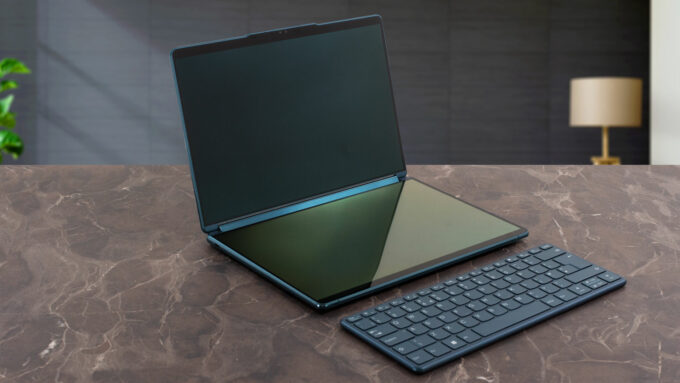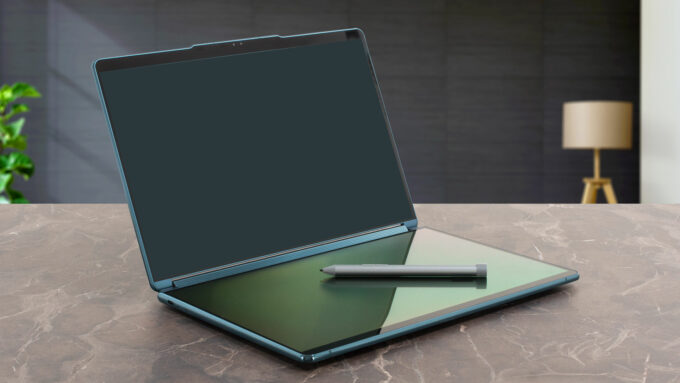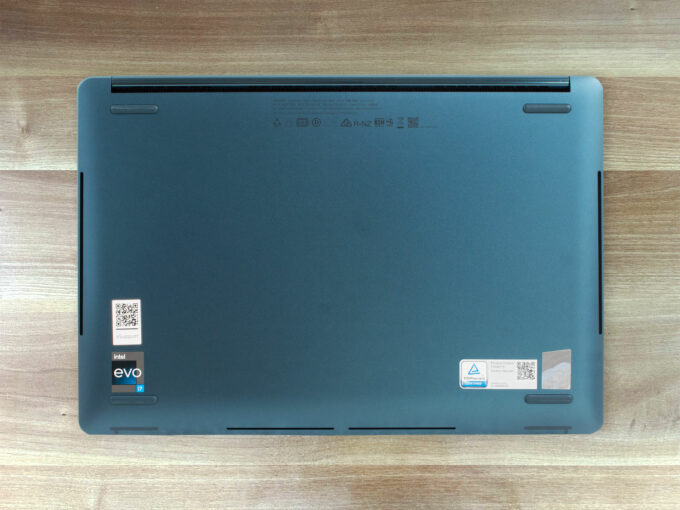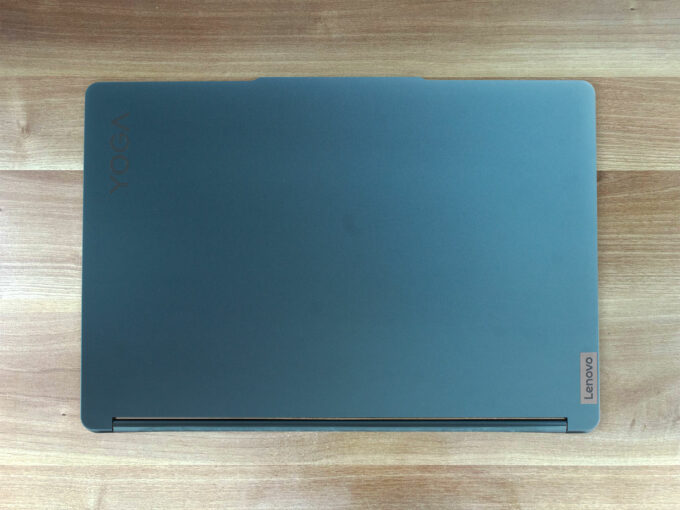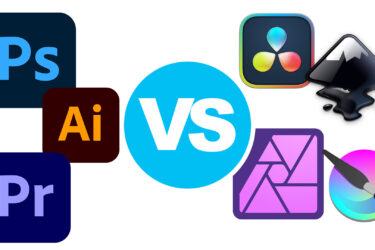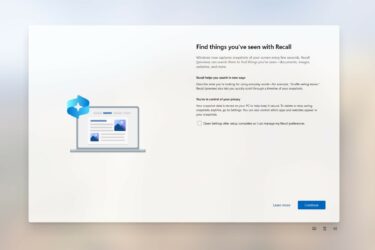Lenovo Yoga Book 9 (13IRU8) review – behold the king of all 2-in-1 laptops is here!
Design and construction
The build quality of this gadget is nothing but fantastic. It is entirely made out of aluminum with an anodized finish. The only color option is Tidal teal. The minimalist design is modern and mature, with very little branding on the lid.
The base and the lid have polished sides all around them. It makes the devices very grippy and it also contributes to an even more premium look. The weight is on the low side for a two-screen laptop – 1.34 kg, while the profile thickness is 15.95 mm. Sure, slimmer devices exist but they are lacking a second panel beneath the main one.
The hinge houses two front-facing 2W Bowers & Wilkins speakers. The mechanism is smooth and you can open the lid with a single hand up to around 85°. After that, the hinge becomes stiffer and you are going to need two hands. The bezels around the two panels are thin, and the top one on the main panel has a slight protrusion. It’s a home of a 5MP IR camera for Windows Hello (and for the Zero-touch function) that has an E-shutter placed on the right side of the base. In landscape mode, touching the bottom part of the second panel with eight fingers will activate the on-screen keyboard (three taps will bring a touchpad to the screen). The virtual keyboard and touchpad look almost real but using them feels a bit unorthodox, especially because of the lack of key travel. After an hour we started to feel the two virtual replacements a bit more convenient to use.
The duo of OLED panels is protected by a glass cover and on top of that, it works effortlessly smoothly with the included Lenovo Digital Pen 3. We spot some tiny flexes on the lid when we twist it in an open position. When the unit is closed, it can bend just a little in the center but in general, the lid is stable. The base is built like a tank and this is very important because you can stack the keyboard on top of it. The machine feels very rigid in tablet mode, moreover, there isn’t a built-in keyboard on the base so the device is comfortable for usage in this shape.
The notebook can also lay fully flat on your desk and you can value the quality of Lenovo’s craft – the laptop looks gorgeous even with the screens turned off. After work, you can play some YouTube videos on one of the displays and play some light casual games on the other. Unfortunately, this machine lacks a fingerprint reader.
The tent mode is useful for Web browsing, presentations, etc. Two users can play their own favorite audio or video content separately due to the dual-screen design.
When the two panels are spread in a dual portrait way (and the keyboard is placed in front of the stand), this can be greatly appreciated by people in the office, students, teachers, and maybe programmers. With the folio case, you can interact with the laptop in a dual landscape manner with the two screens stacked on top of each other. You can also enlarge windows or an app / document across the two panels by tapping with five fingers on the screen. Or you can drag documents, windows, applications, or whatever you like from one screen to another with the stylus (or by using your fingers, the old-school way).
Of source, you can work with the notebook without the fancy accessories and use it as a standard laptop.
At least for us, not taking advantage of the 360-degree hinge and the touch capabilities will be a bit strange. Below you can see more ideas regarding different usage modes with or whiteout the keyboard.
Speaking of the keyboard, the provided external unit is good for typing (not the greatest though), the key travel is decent and the same applies to the feedback which is averagely clicky, but that’s okay for a Bluetooth unit. When placing it on the top of the second panel, the virtual touchpad immediately pops up beneath the board. If you place the Bluetooth unit in the lower part of the bottom display, you can fill up the unused space above it with widgets or other windows.
If you remove all the stickers placed on the bottom panel you will enjoy a much neater-looking plate. Speaking of stickers, the Intel Evo one reminds us that the device is based on this Team Blue platform, so we can expect snappy performance and at least good battery life (more on that later). We can also spot four small rubber feet, two narrow openings for the two 2W Bowers & Wilkins woofers (placed below the two rubber feet), and slim ventilation openings that bring fresh air to the cooling fan. The hot air is exhausted through a wide vent placed on the back of the device. It’s positioned in front of the hinge, so the lower part of the main display is getting warm when the CPU is under heavy load.
As you can see, the lid is much thinner compared to the base that houses the second screen.
Ports
The port selection is modern but somehow spartan. On the left, there is a single Thunderbolt 4 port. On the other side, we can see a pair of Thunderbolt 4 connectors, an E-shutter switch, and a power button. The Thunderbolt ports support 40Gbps data transfer, Power Delivery 3.0, and DisplayPort 1.4 (for up to 8K 60Hz external displays) functionalities.

